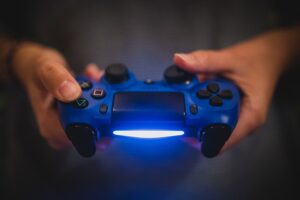In the fast-paced world of gaming, every millisecond counts. Whether you’re battling in an intense FPS or exploring vast open worlds, having the right gaming monitor settings can significantly impact your performance. From refresh rates to color calibration, this comprehensive guide will walk you through every aspect of optimizing your gaming experience. Discover the secrets to achieving crystal-clear visuals, minimal input lag, and a truly immersive gaming environment.
Gaming-Monitor-Settings: Your Key to Gaming Glory

When it comes to dominating your favorite games, having the best equipment is essential. Your gaming monitor serves as your window into virtual worlds, and tweaking its settings can make all the difference. By fine-tuning various parameters, you can achieve smoother motion, clearer images, and faster response times. Let’s delve into the specifics of gaming monitor settings that can level up your gameplay.
Brightness and Contrast: Shedding Light on Visuals
Adjusting the brightness and contrast of your gaming monitor is the first step towards achieving optimal visuals. While higher brightness might seem ideal, excessive levels can strain your eyes during prolonged gaming sessions. Finding the right balance ensures vibrant visuals without sacrificing comfort.
Resolution and Aspect Ratio: Finding Your Sweet Spot
Selecting the right resolution and aspect ratio can drastically impact your gaming experience. Higher resolutions offer sharper images, but they also demand more processing power. Consider your graphics card’s capabilities when choosing a resolution, and don’t forget about the aspect ratio – the ratio of width to height. Different games may benefit from different aspect ratios, so experiment to find your sweet spot.
Refresh Rates: Smoother Motion, Faster Reflexes
Refresh rates determine how many frames per second your monitor can display. Higher refresh rates lead to smoother motion and reduced motion blur. Most gaming monitors offer refresh rates of 60Hz to 240Hz. While 60Hz is standard, competitive gamers often opt for 144Hz or higher for an advantage in fast-paced titles.
Response Time: Minimizing Input Lag
Response time measures how quickly a pixel can change from one color to another. Lower response times result in less motion blur and input lag. Aim for a response time of 5ms or lower for optimal performance. In fast-paced games, even milliseconds count, so this adjustment can significantly impact your gameplay.
Color Calibration: Immerse Yourself in Visual Excellence
Calibrating your monitor’s colors ensures accurate and vibrant visuals. Use calibration tools or online resources to adjust settings like gamma, color temperature, and saturation. Many monitors also offer pre-set color profiles tailored to specific game genres, so explore these options to find the best fit for your preferences.
Field of View (FOV): Finding the Right Balance
Field of view refers to the visible area on your screen while gaming. A wider FOV lets you see more of the game world, enhancing situational awareness. However, an extremely wide FOV can distort objects at the edges of the screen. Strike a balance that gives you an advantage without compromising game aesthetics.
Anti-Aliasing: Smoothing Out the Edges
Anti-aliasing is a graphics setting that reduces jagged edges and flickering in games. It enhances visual quality by blending sharp edges and creating a smoother appearance. Experiment with different anti-aliasing options provided by your graphics card or game settings to strike the right balance between performance and visuals.
External Links for Further Reading:
- For a deeper dive into gaming monitor technologies, check out Wikipedia’s article on Monitor Refresh Rates
- Explore the benefits of different Aspect Ratios in Gaming

Achieving Optimal Gaming Monitor Settings: FAQs
Q: Can I use the same settings for all types of games? A: While some settings might work well universally, tweaking settings based on the genre can enhance the experience. For instance, competitive FPS games benefit from higher refresh rates, while single-player RPGs might prioritize color accuracy.
Q: What’s the ideal brightness level for gaming? A: The ideal brightness level varies based on your gaming environment. Aim for a level that’s comfortable and doesn’t strain your eyes during extended sessions.
Q: How do I know if my graphics card can handle higher resolutions? A: Check your graphics card’s specifications and compare them to the recommended requirements of the game. Upgrading your graphics card might be necessary for smooth performance at higher resolutions.
Q: Can I calibrate my monitor without special tools? A: Yes, there are many online resources and software tools that can help you calibrate your monitor’s colors without the need for specialized equipment.
Q: Do consoles benefit from these settings? A: Absolutely. While some settings might be limited by the console’s hardware, adjusting aspects like refresh rate and brightness can still improve your gaming experience.
Q: How often should I recalibrate my monitor? A: It’s a good practice to recalibrate your monitor every few months, as monitor settings can drift over time.
Conclusion
Achieving the perfect gaming monitor settings isn’t a one-size-fits-all endeavor. It’s a combination of personal preferences, gaming genres, and hardware capabilities. By following the tips in this guide, you can fine-tune your gaming monitor to create a visually stunning and responsive gaming experience. Stay ahead of the competition with sharper visuals, smoother motion, and a competitive edge, all thanks to your newly optimized gaming monitor settings.
You May Also Enjoy Reading: How to Keep Your System Cool for Optimal Performance?
